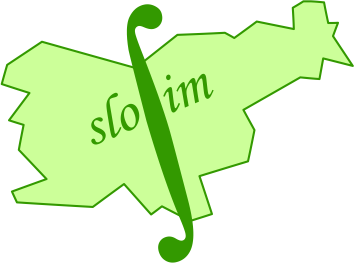International Summer Day
Summary...
Borut Zupančič
MULTI-DOMAIN MODELLING: MODELICA AND SOME EXPERIENCES FROM EDUCATION AND INDUSTRIAL APPLICATIONS
Modelling and simulation as an important approach in hi tech developments can only be effective with modern simulation tools. Up to now so called block oriented or causal tools prevailed. However in the last decade important developments of more ‘physically oriented’ tools became extremely important. New, object-oriented and multi-domain tools based on the Modelica language are more appropriate for industrial staff or for the people who do not have a deep insight into modelling and simulation. In this lecture an introduction to multi-domain and physical modelling will be given. We will also describe basic approaches for physical modelling: Bond graphs and OO approach, causal versus acausal modelling, important features of OO multi-domain modelling environments: component coupling, hybrid modelling and symbolic processing. The Dymola and some other Modelica environments will be pointed out. A brief introduction to MODELICA language will be given: textual, icon based modelling and modelling with standard Modelica library will be presented. The final part of the lecture will deal with several educational and industrial application projects in the Dymola-Modelica environment: a process-systems library, two mechanical systems (an inverted pendulum and a laboratory helicopter), a model of thermal and radiation flows in buildings and two models of processes in mineral-wool production, i.e., a pendulum system and a recuperator system.
Božidar Šarler
MULTISCALE AND MULTIPHYSICS SIMULATIONS BASED ON MESHLESS METHODS
Structure of a new meshless solution procedure for calculation of one-domain coupled macroscopic heat, mass, momentum, and species transfer problems under influence of electromagnetic fields, as well as phase field concepted models and cellular automata models of microstructure evolution is represented. The solution procedure is defined on a set of nodes which can be non-uniformly distributed. The domain and boundary of interest are divided into overlapping influence areas. On each of them, the fields are represented by the multiquadrics radial basis functions collocation or least squares approximation on a related sub-set of nodes. The transition rules are defined for a set of nodes on the influence area in case of cellular automata modelling. The timestepping is performed in an explicit way. All governing equations are solved in their strong form, i.e no integrations are performed. The polygonisation is not present. The possible growth of the domain (like in the problems of die casting or continuous casting) is described by activation of additional nodes and by the movement of the boundary nodes through the computational domain, respectively. The solution can be easily and efficiently adapted in node redistribution and/or refinement sense, which is of utmost importance when coping with fields exhibiting sharp gradients (phase field variable or enthalpy, for example). Step by step benchmarking of the method is represented, followed by some large scale industrial examples such as the grain structure formation in continuous casting of steel and turbulence modelling with solidification. The results of the new approach are compared with the analytical solutions, well documented bench-mark solutions and commercial packages. The method turns out to be extremely simple to code, accurate, inclusion of the complicated physics can easily be looked over. The coding in 2D or 3D is almost identical. Applications to several industrial and scientific problems are shown.
Felix Breitenecker, Niki Popper, Siegfried Wassertheurer:
Modelling and Simulation in Health Technolgy
Modelling and Simulation (M&S) has found its way into many areas, almost in our daily life, so also into health technology (HT). Health technology and medical technology encompass a wide range of health care products and services – from vaccination strategies to heart circulation monitoring. And they are used to diagnose, monitor or treat every disease or condition that affects humans. M&S in HT is improving the quality of health care delivered and patient outcomes through earlier diagnosis, less invasive treatment and reductions of illness.
This presentation investigates M&S in HT at different levels:
- M&S for developing a HT product,
- M&S implemented in a HT product, and
- M&S for assessment of a HT product.
While the step from model-based development of HT products to model-based operation of HT products is evident, the last step to model-based assessment of HT products is relatively new application of M&S – and necessary for the success of HT products. Interestingly, although the aims of M&S at these three levels differ significantly, the M&S techniques – from Markov models via ODEs/PDEs to Agent-based models stay the same.
Aleš Belič
Modelling of Metabolic Processes: System Dynamics and Control Engineering
Understanding of metabolic processes is of key importance for efficient prevention and treatment of diseases. Experimenting with biological tissues and organisms is quite problematic, regarding experimental design and implementation as well as ethically. To reduce experimental problems, modelling and simulation can be successfully applied. Most important aspect of modelling and simulation is introduction of systemic view into metabolic processes research that initiated systems biology and systems medicine as newly emerging science areas. Combining experimental data and state-of-the-art understanding of metabolic processes into a mathematical model represents a serious challenge, since all the processes operate as feedback control systems. Currently, genetic information and environmental influences on metabolism are being extensively studied in various experimental designs; however, no real integration of the information with the metabolic networks properties has been achieved so far. The dynamic character of the metabolic processes has been almost completely neglected up to date; however, system dynamics of a non-linear system per se, could explain a development of several diseases. With the case of cholesterol metabolic network we will show how modelling and simulation can contribute to understanding of metabolic processes and its deregulation.
Jure Jerman, Jure Cedilnik
Numerical modelling of weather
Numerical weather prediction is probably the most complex simulation system, which is routinely carried out several times a day. The lecture will deal with the development of numerical modelling of weather in the last 50 years, with the methods used in the simulation of weather processes and the likely direction of future development. At the end we shall visit the computing centre, where infrastructure subjected to numerical weather forecast will be presented.
Organisation & Venue
University of Ljubljana
Faculty of El. Eng.
Laboratory of Modelling, Simulation and Control
Laboratory of Autonomous Mobile Systems
The event is co-organised by:
SLOSIM – Slovene Society for Simulation and Modelling
Technical University Vienna, Inst. for Analysis and Scientific ComputingSeptember 18, 2013
 University of Ljubljana, Faculty of Electrical Engineering, Tržaška 25, 1000 Ljubljana, Slovenia
University of Ljubljana, Faculty of Electrical Engineering, Tržaška 25, 1000 Ljubljana, Slovenia
Registration
free of charge, through email to
Email: borut.zupancic@fe.uni-lj.si
University of Ljubljana,
Faculty of Electrical Engineering
Tržaška 25, 1000 Ljubljana, Slovenia
Tel:+38614768306
The number of accepted candidates is limited.
Students

The event is intended to students of all cycles with a basic knowledge of physics, mathematics, especially to students from natural and technical studies. Some basic knowledge from the system theory and simulation is also helpful.
Students from TU Vienna will also attend the event.
Summer Day Venue
Shaping the Future with Engineering Simulation
© All rights reserved


